Year 3 Matric Measures Worksheets
Adding and Subtracting Metres and Centimetres
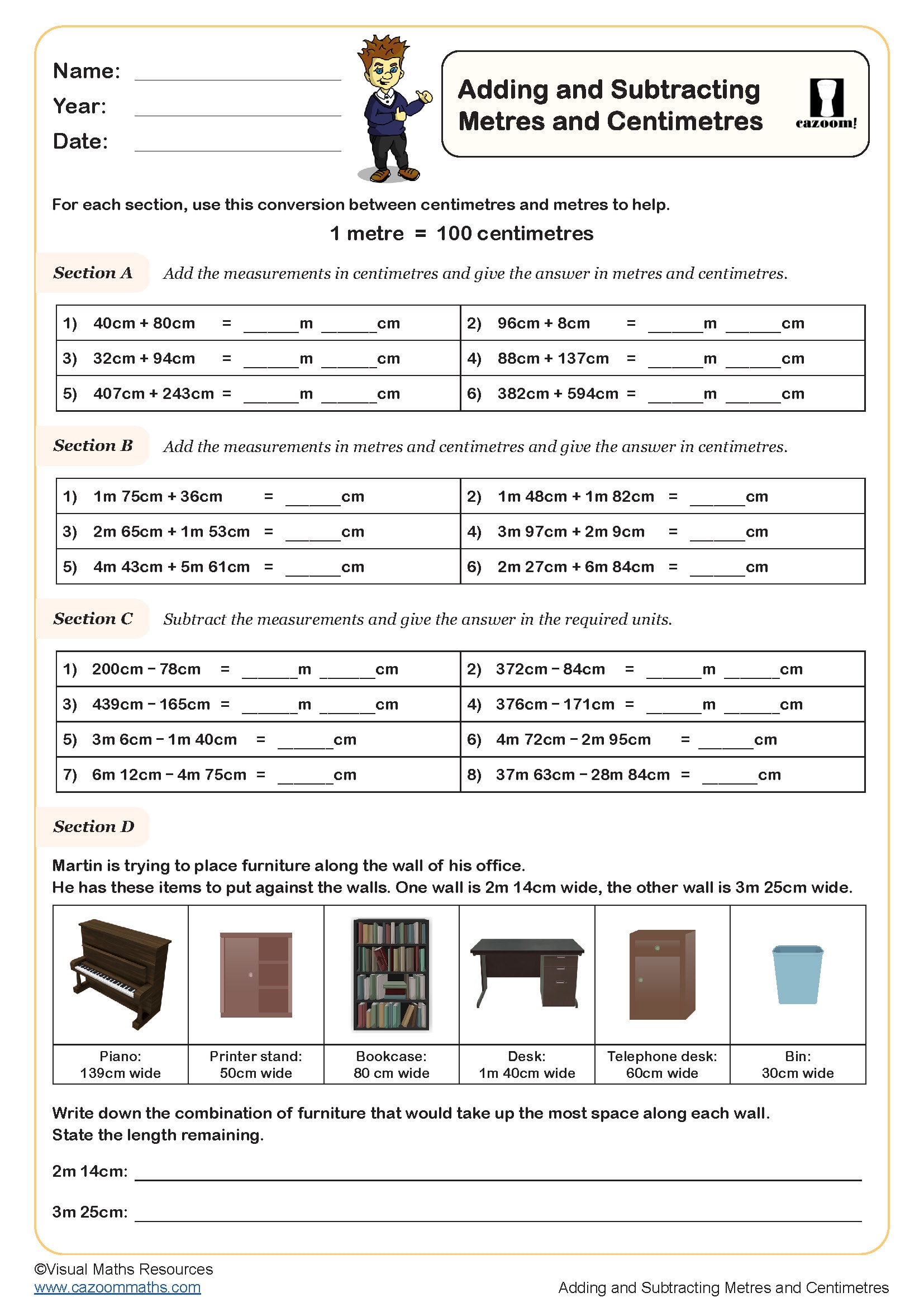
Converting Lengths - Centimetres and Millimetres
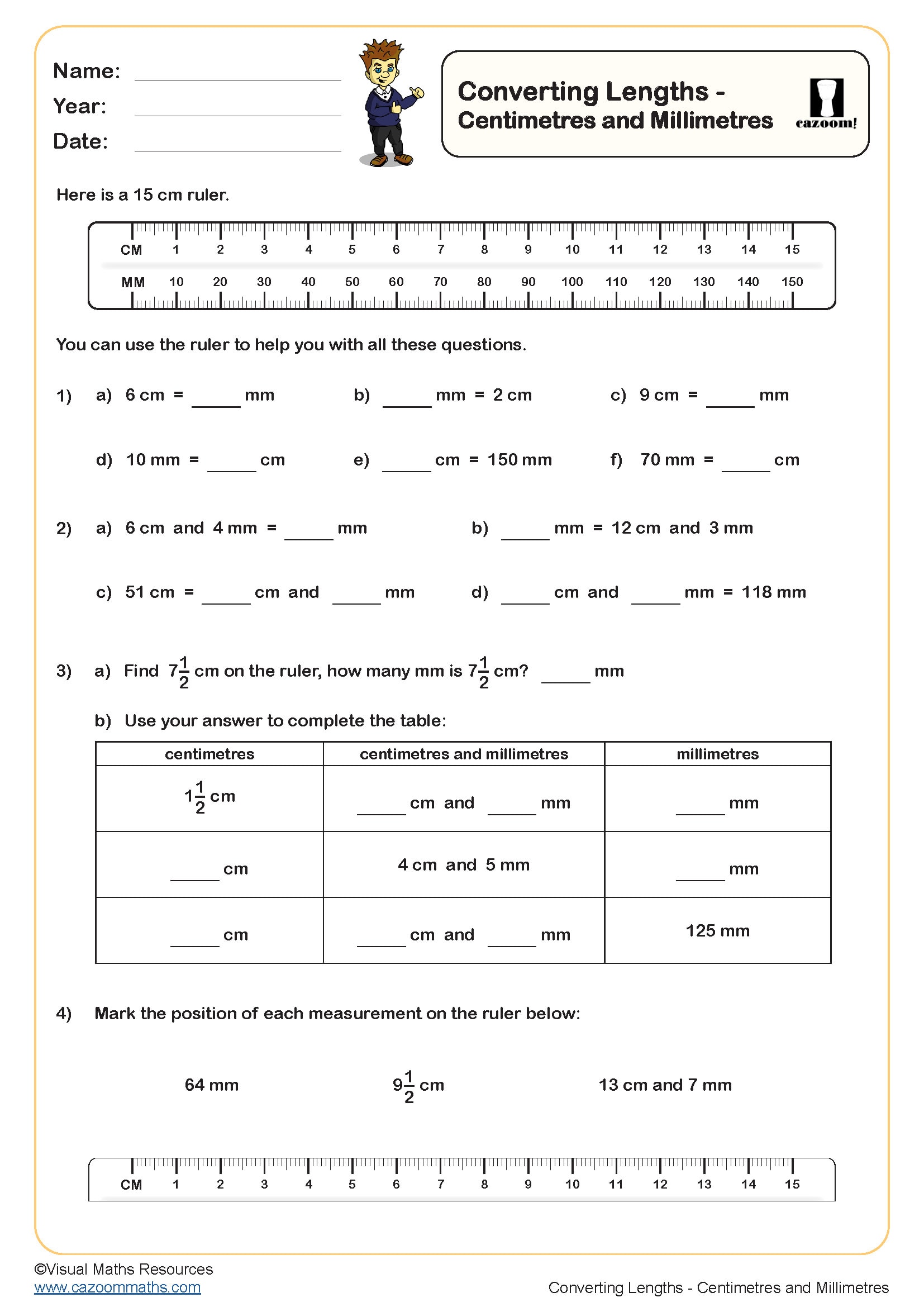
Converting Lengths - Metres and Centimetres
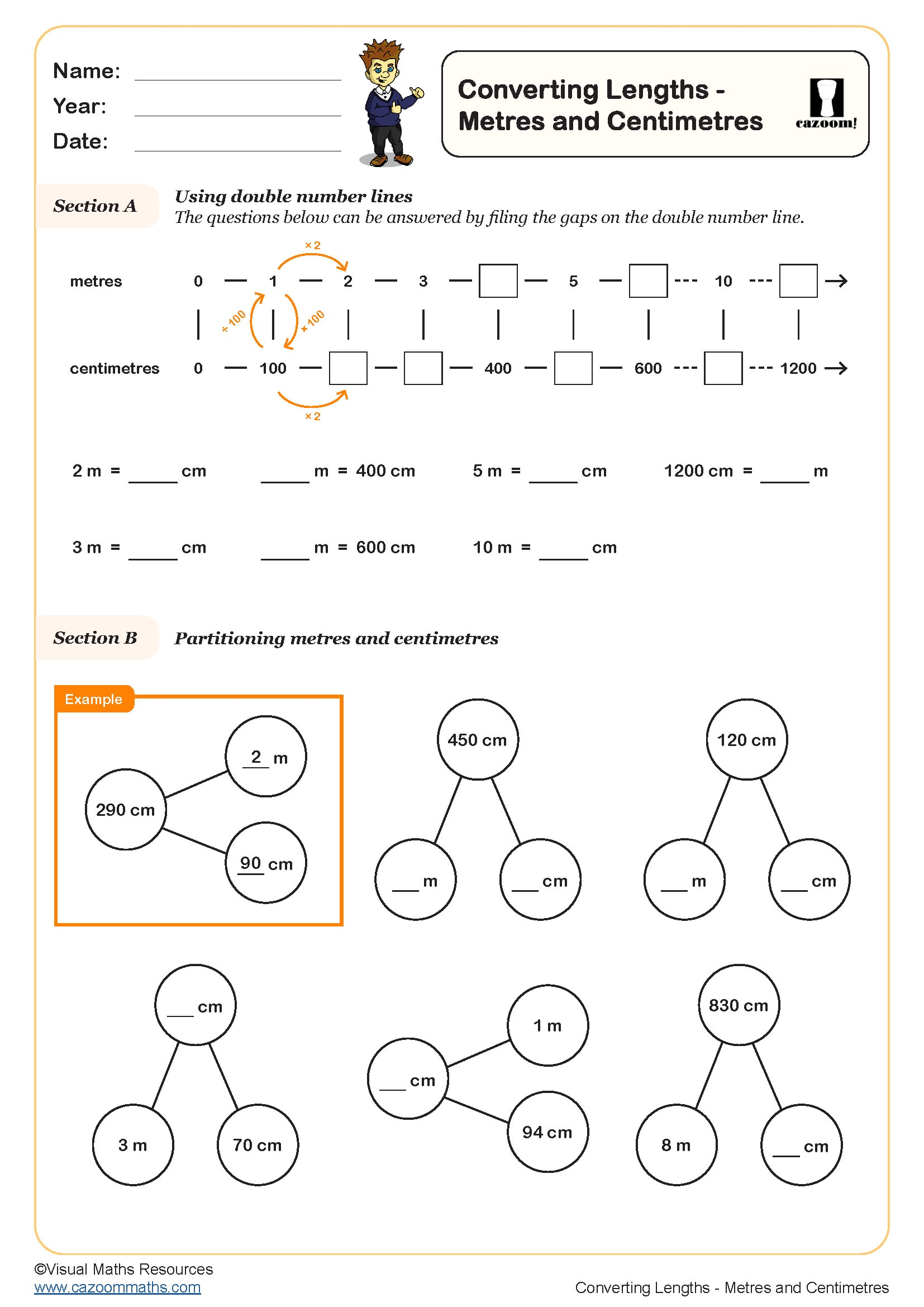
Estimating With Suitable Metric Measures
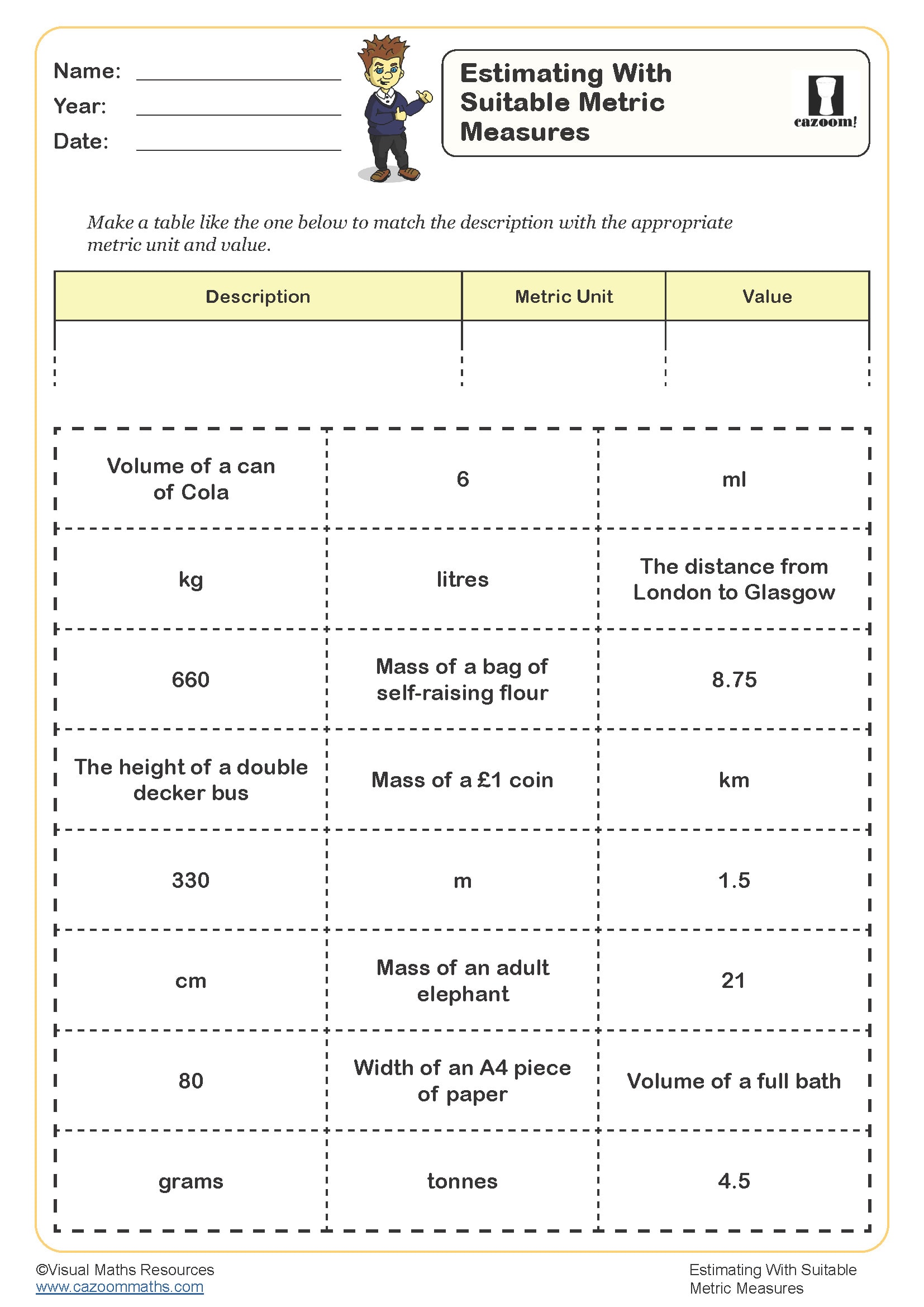
Making 1 kg
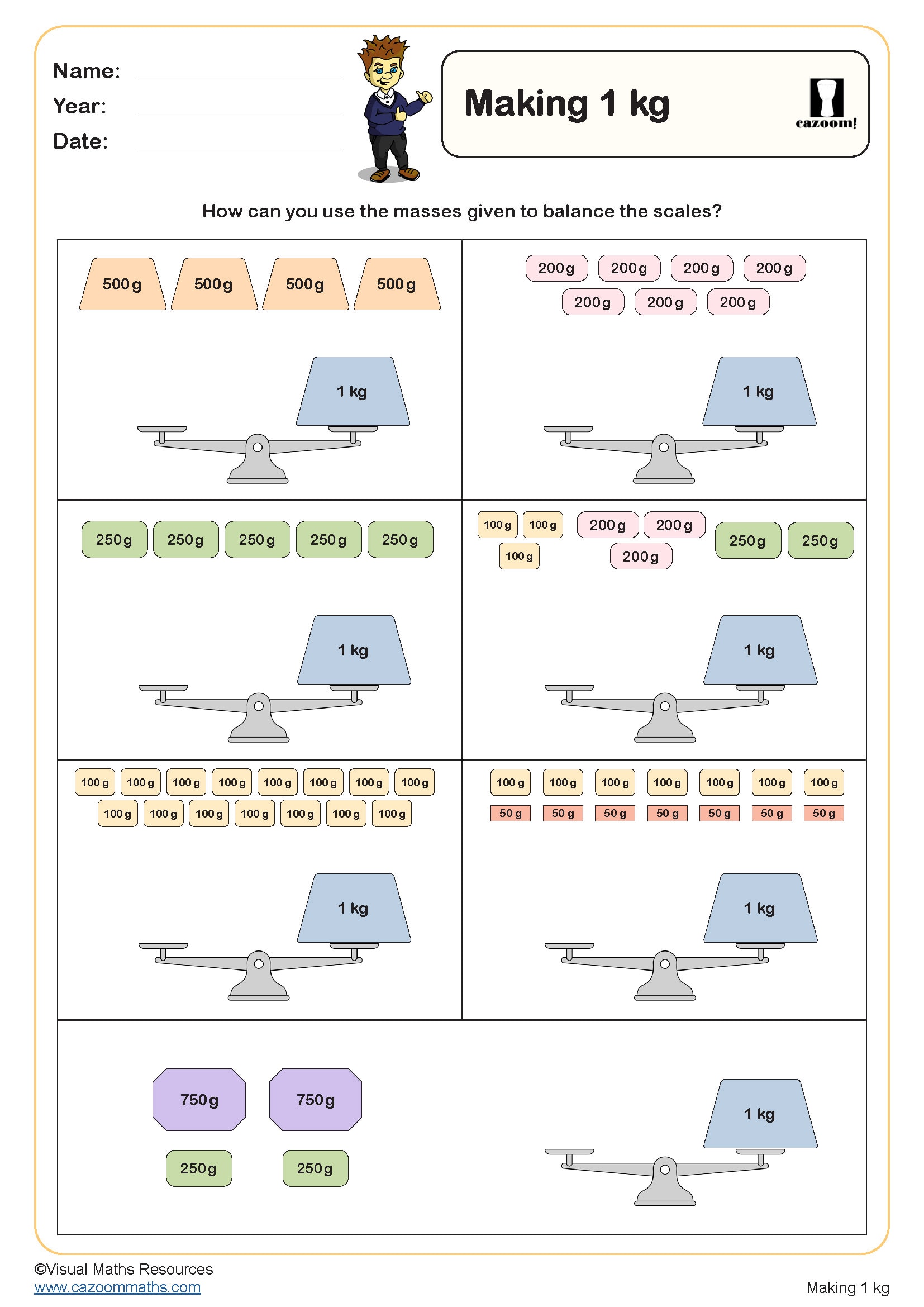
Making 1 L
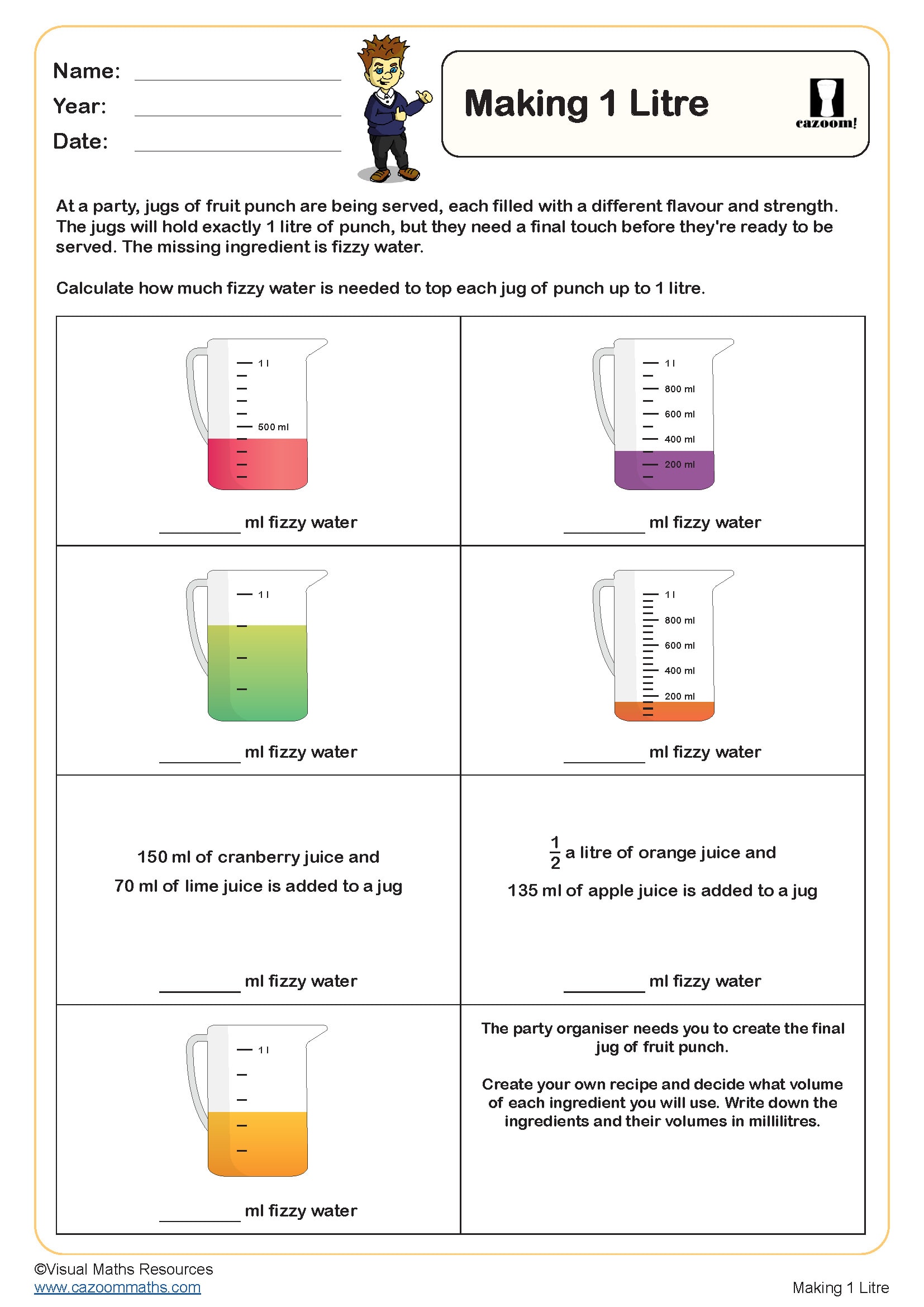
Measure Mass - in Grams (B)
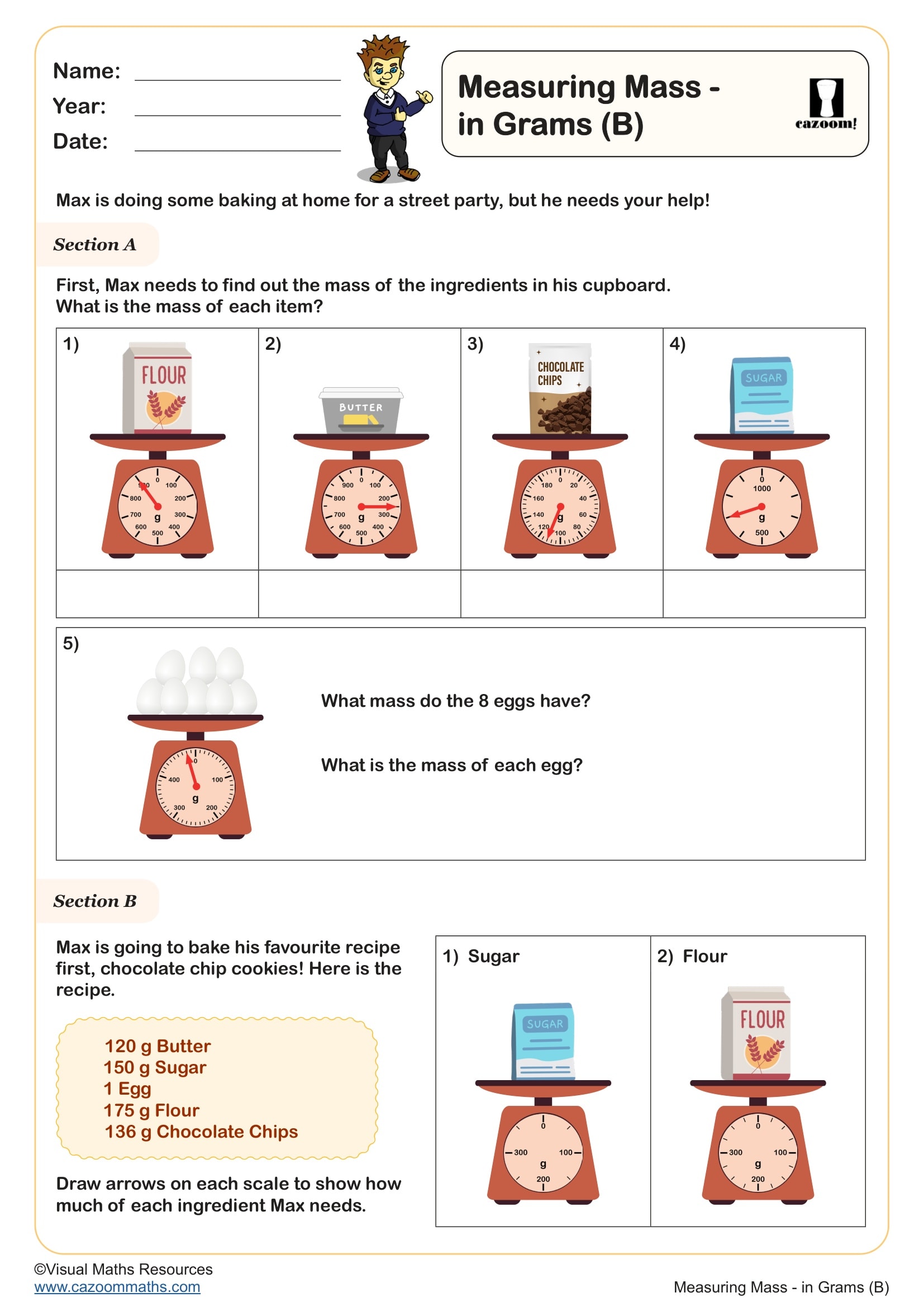
Measure Mass in Kilograms and Grams
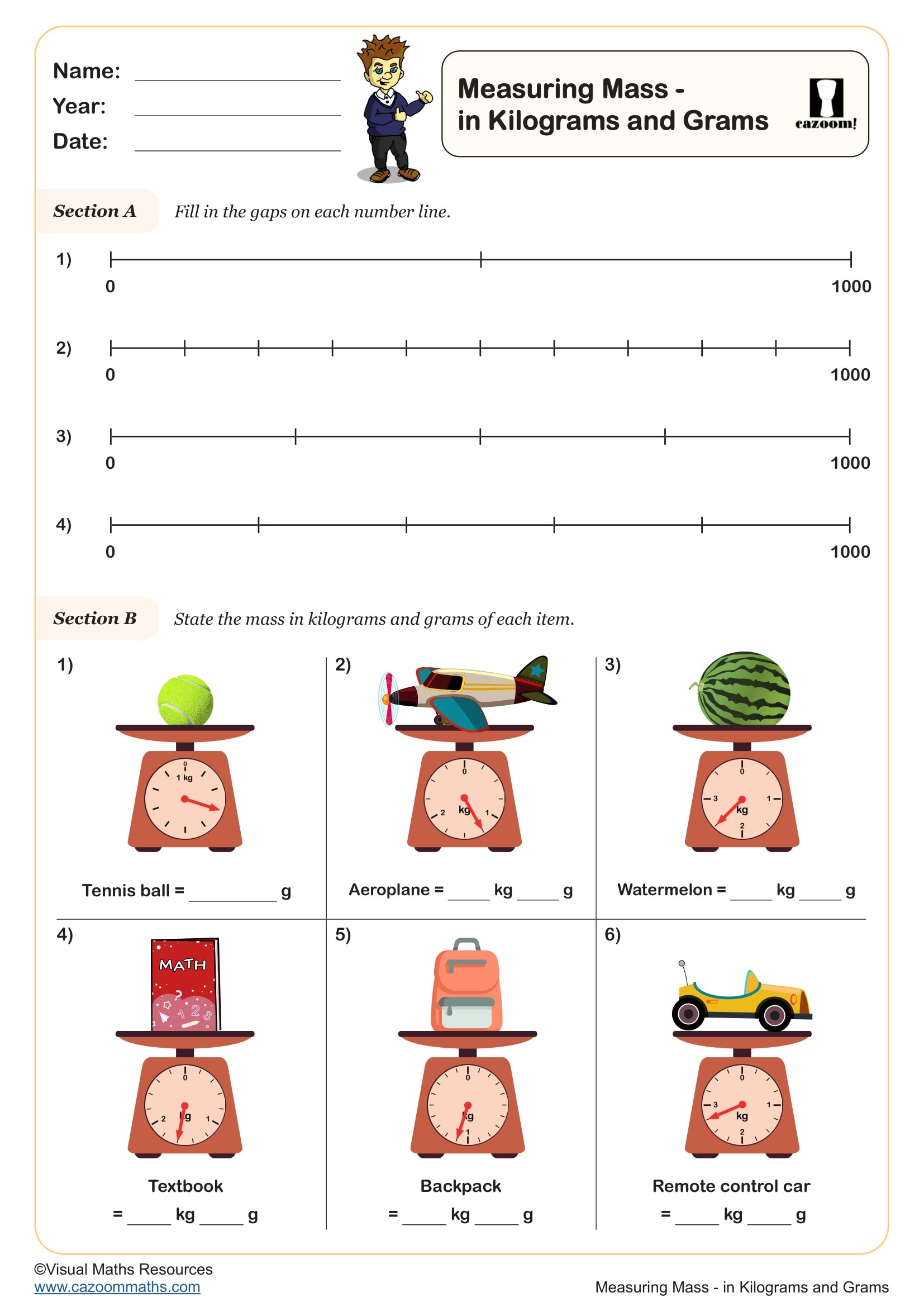
Measure Straight Lines (B)
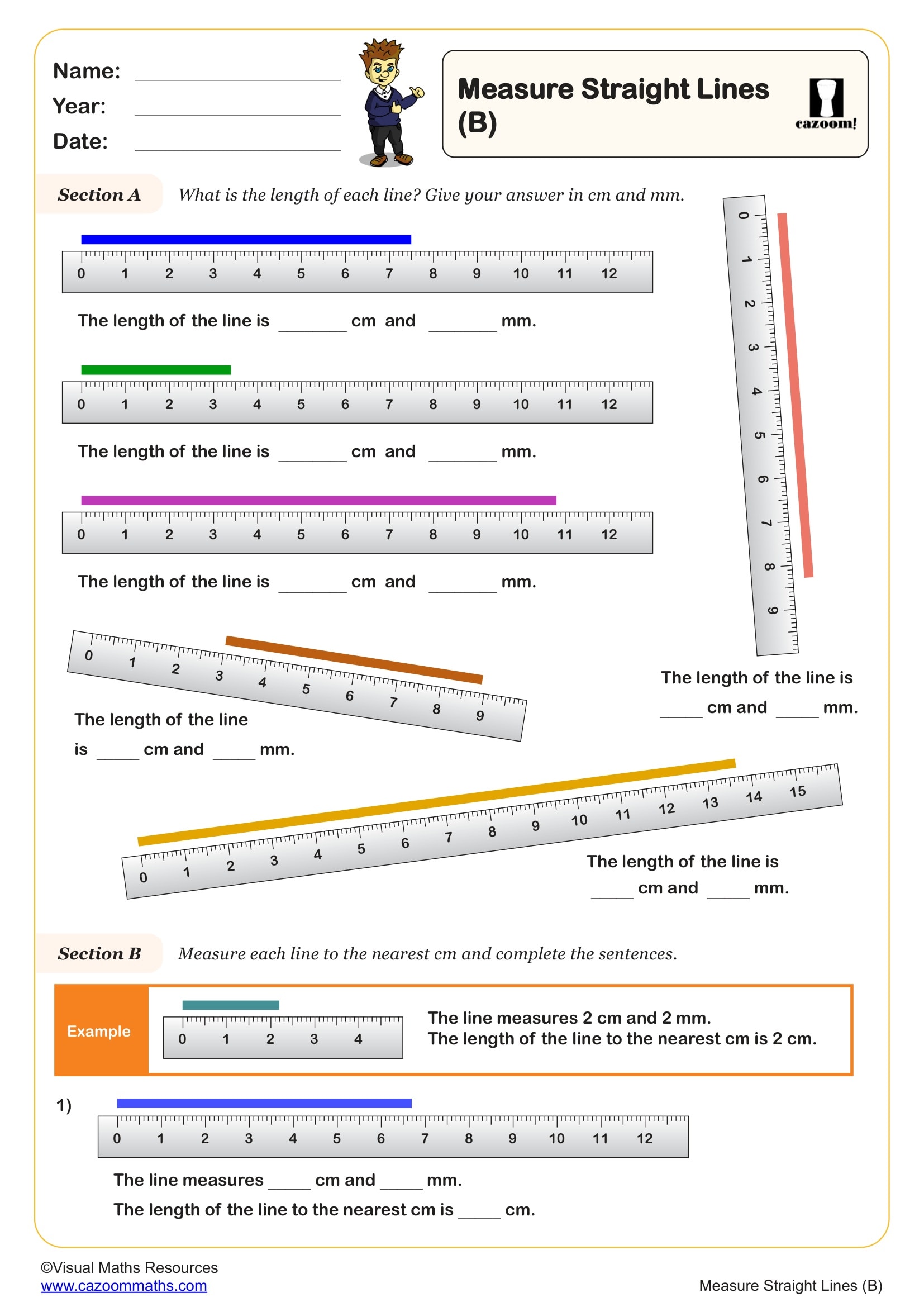
Using Metric Units (A)
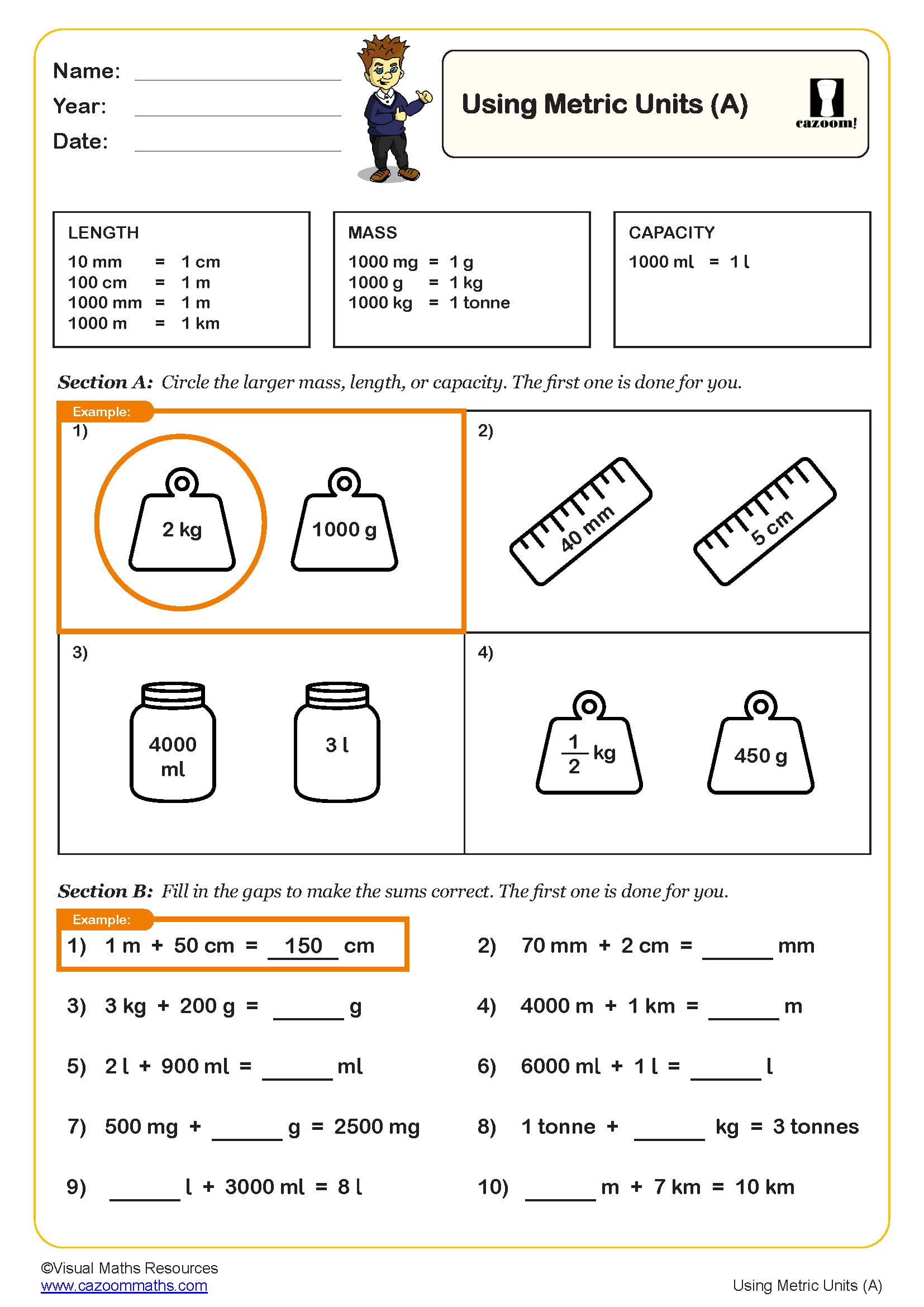
Using Metric Units (B)
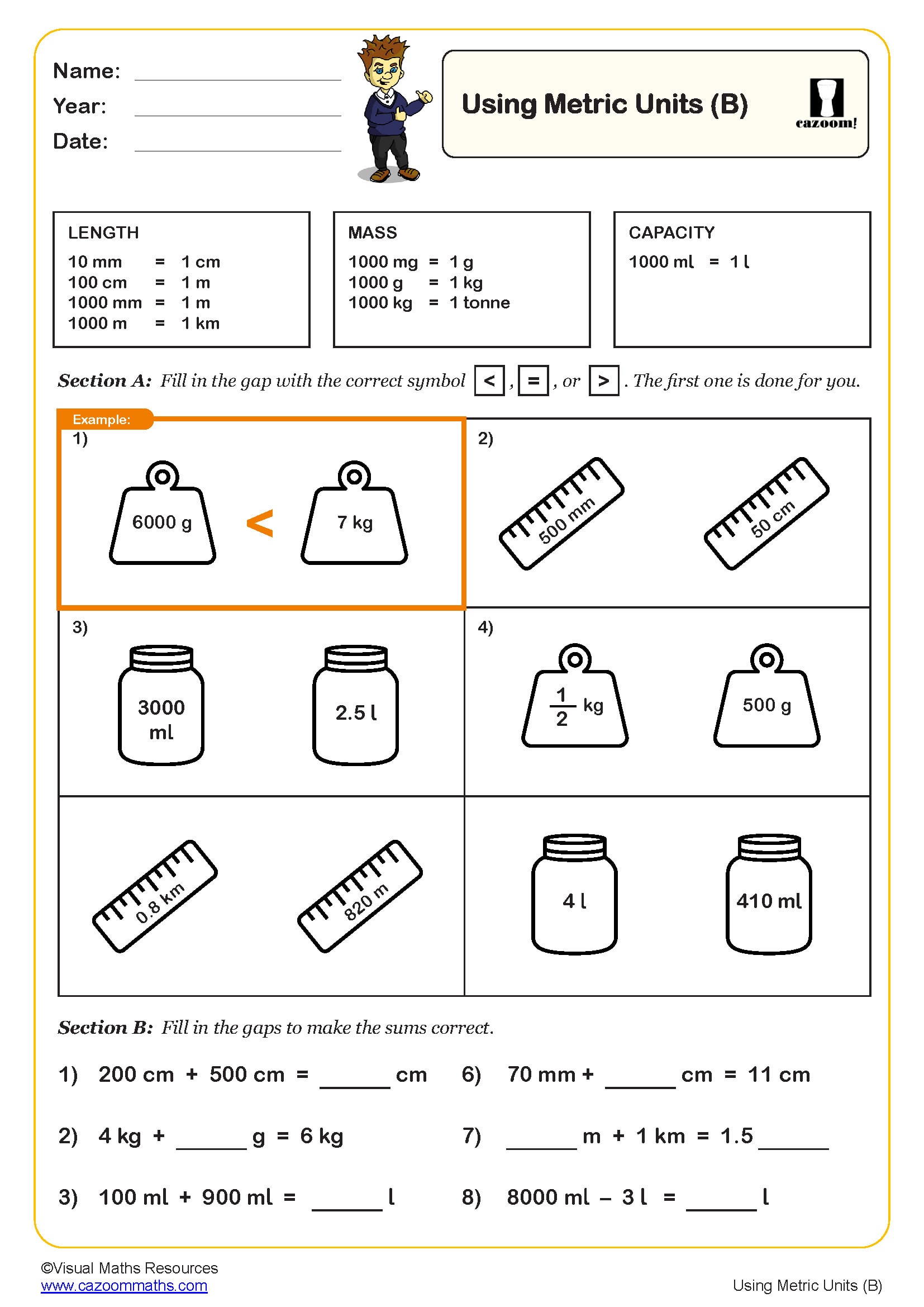
Download Year 3 Measurement Worksheets PDF with Step-by-Step Solutions
Finding quality measurement worksheets and Year 3 PDF resources that actually engage young learners isn't easy. These ready-to-use, printable worksheets tackle everything from basic centimetre recognition to comparing and measuring lengths, mass, and other units, all with detailed answer sheets that show the thinking process. Students particularly love the visual elements that make abstract measurement concepts click into place.
Essential Measuring Skills Your Year 3 Class Will Master
Metric measurements are a decimal-based system of measurement used worldwide for measuring length, weight, volume, temperature, and other quantities. It's the standard system used in the UK and most countries globally.
Your primary school students particularly enjoy the real-object measuring activities (surprisingly engaging), and the estimation challenges always spark brilliant classroom discussions. Each worksheet carefully introduces new vocabulary like 'capacity' and 'mass' while reinforcing essential skills through varied, visual problems.
How Regular Measurement Practice Transforms Year 3 Mathematical Thinking
Teaching measurement consistently shows us something fascinating: students who practise these skills regularly develop much stronger spatial reasoning overall. The connection between hands-on measuring and improved problem-solving confidence becomes obvious within weeks, especially when we see how it supports their performance in other mathematical areas.
Essential benefits our teachers observe:
• Enhanced number sense when converting between metric units
• Improved estimation abilities that support mental maths strategies
• Stronger mathematical vocabulary for describing size and quantity
• Increased confidence in using measuring tools accurately and independently
• Better understanding of place value through decimal measurements
Where Students Actually Encounter Metric Measurement Skills
Measurement skills appear everywhere once they start noticing. We have watched Year 3 pupils excitedly measuring ingredients for cooking projects, calculating distances for sponsored walks, and comparing heights during science investigations. It's genuinely satisfying when they realise these aren't just "maths skills" but practical life tools they'll use constantly.
Metric measurement connects across:
• Science experiments measuring plant growth, liquids, and materials accurately
• Design technology projects requiring precise measurements for construction
• Art activities involving scale, proportion, and spatial planning
• PE lessons measuring distances, heights, and athletic performance
• Geography work involves understanding map scales and real-world distances
• Home cooking, baking, and DIY projects with family members